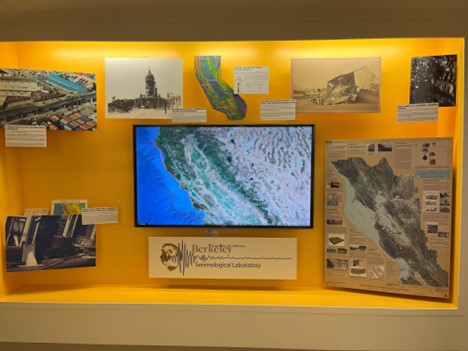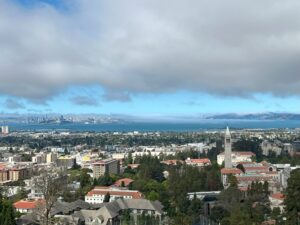Report on the overseas joint research by Yanhan Chen (DPRI, Kyoto Univ.)
Yanhan Chen
PhD student at Kyoto University
In February of this year, I was honored to receive funding support from the Science of Slow-to-Fast EQ project, which provided me with the opportunity to conduct overseas research. From June 26, 2024 to September 9, 2024, I carried out my overseas research at UC Berkeley. My main focus was on combining deep learning with low frequency earthquakes (LFEs), working in Prof. Weiqiang Zhu’s group. I attempted to train a comprehensive LFEs model using actual LFEs data. Every Tuesday, I met with Prof. Weiqiang to discuss my progress over the past week and discuss issues I encountered. The key to training a LFE model is obtaining enough effective training dataset. I prepared to build a systematic LFE model by collecting LFEs catalogs from major subduction zones, including Nankai, Cascadia, New Zealand, Parkfield, Alaska, and Mexico. I wrote code to process the corresponding LFEs waveforms and filtered out the higher quality LFE waveforms. Since LFEs differ from regular earthquakes, I invested a lot of time and effort in selecting and labeling the LFE dataset, which also enhanced my programming ability to download and process large amounts of different network waveform data.

(Figure 1 One corner in Berkeley Seismology Laboratory)
During my stay, I stopped by Takaaki Taira san, a seismologist at Berkeley Seismology Laboratory. In addition to discussing repeater earthquakes and long period earthquakes around volcano, we also talked about life in Japan. While organizing LFE waveforms from different subduction zones, I noticed that Alaska has a Shumagin seismic gap. I was curious whether Shumagin seismic gaps share similar slow earthquake environments with Guerrero gap, so I collected continuous waveform data around the Shumagin gap. I discussed with Prof. Roland Bürgmann for several times, and he and Dr. Eric Fielding had also discussed these gaps. He suggested that I could consider combining seismological data with geodetic data in the future. Coincidentally, He had recently published a related paper, which inspired me after reading it. He invited me to give a presentation on Guerrero Seismic Gap research and my plans in the future research at their Active Tectonics meeting. It was a coincidence that I attended a BSL seminar where Prof. Donna Shillington presented her research on Shumagin gap, which convinced me that there are still valuable scientific questions to explore in this region.

(Figure 2 Overview of campus and Bay Area)
This overseas experience broadened my horizons. Through discussions with several seismologists, I realized the importance of active dialogue and collaborative research. During my free time, I often climbed the hills behind campus and the Lawrence Berkeley Lab on weekends, where I could overlook the entire city from the summit. The Mediterranean climate here reminded me of my senior high school geography classes. As a PhD student, I am very fortunate to have the opportunity for this overseas research experience. I am very grateful to Science of SF project for their funding and to my supervisor Prof. Yoshihiro Ito for his support.
